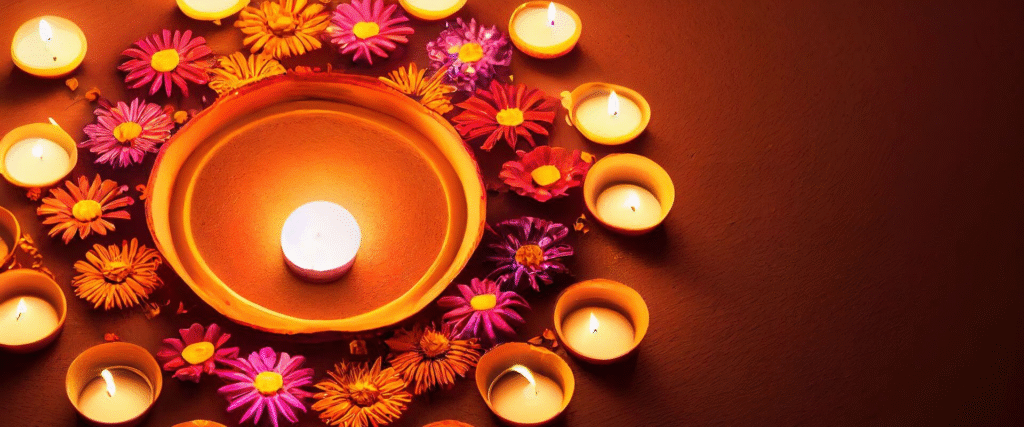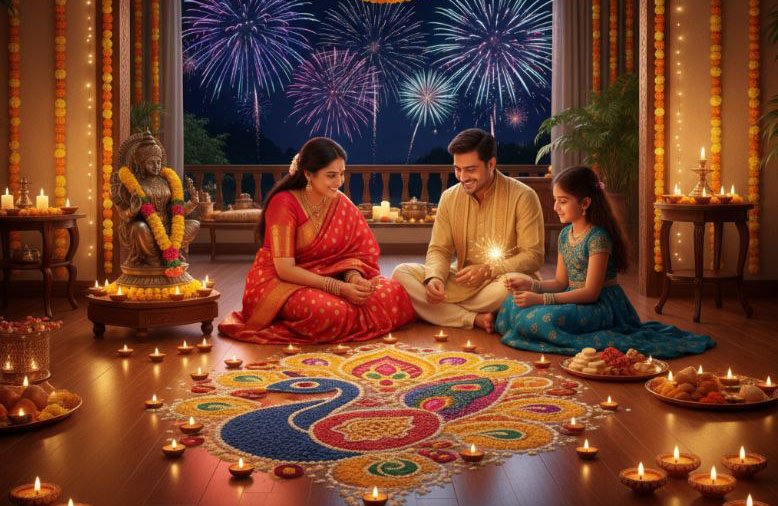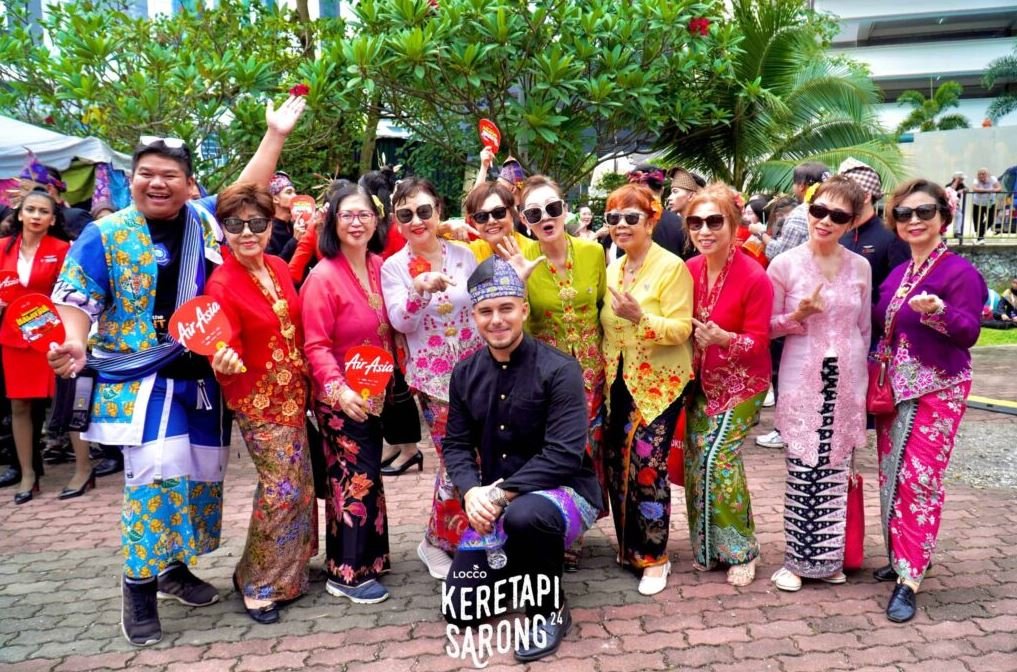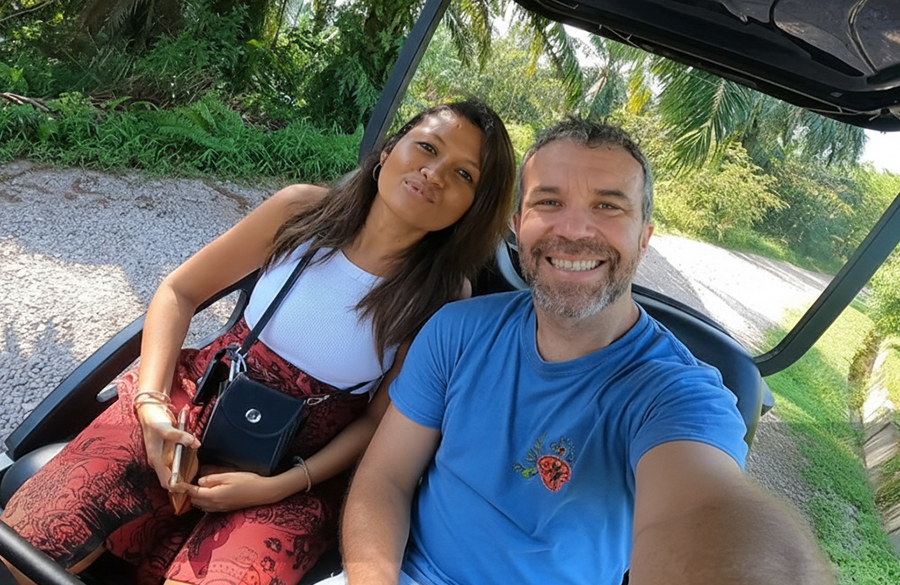Deepavali (also called Diwali) is one of Malaysia’s most radiant and beloved festivals. It lights up homes, streets, hearts, and invites people—locals and travellers alike—to experience culture, family, and hope. If you’re curious what it’s like to be in Malaysia during Deepavali, you’re in for a treat. Let’s dive into what makes Deepavali in Malaysia magical, how it’s celebrated, what to expect, and tips so you can enjoy it fully.
1. What Is Deepavali & Why It Matters
- Meaning & Origin: The word Deepavali comes from Sanskrit: “deepa” (lamp) + “avali” (row or series). So it literally means “a row of lamps” or lights. Malaysia Travel+2Travelfish+2
- Legends behind it:
- One popular story in South Indian tradition is that Deepavali marks the day Lord Krishna defeated the demon king Narakasura, freeing people from tyranny. Malaysia Travel+2Holidify+2
- Another story common among North Indian traditions is the return of Lord Rama (with Sita & Lakshmana) after his 14 years of exile and after defeating Ravana. Malaysia Travel+2Travelfish+2
- What it symbolizes: Triumph of light over darkness, good over evil, hope, renewal, family, gratitude. It’s not just about external lights—but also about internal cleansing, forgiveness, and fresh starts. Travelfish+3Malaysia Travel+3Culture Trip+3

2. When & Where: Deepavali in Malaysia
- Date: Because it follows the Hindu lunar calendar, Deepavali in Malaysia falls in October or November, usually on the new moon (Amavasya) of the month of Kartika or Aippasi. Traveloka+2International School of Kuala Lumpur+2
- Official holiday: Deepavali is a national holiday in Malaysia. Traveloka+1
- Places to experience it most vibrantly:
- Kuala Lumpur: in areas like Little India / Brickfields, temples like Sri Kandaswamy Kovil, Sri Mahamariamman Temple. Travelfish+2Wikipedia+2
- Penang, Selangor, Perak and any town with significant Tamil / Indian Hindu communities. Street decorations in malls, storefronts will be glowing. Malaysia Travel+2Travelfish+2
3. Traditions & Rituals: What Locals Do
Here’s what families and communities often do during Deepavali:
| Time | Ritual / Activity | Meaning / Purpose |
|---|---|---|
| Days leading up | Spring-cleaning of homes; decorating entrances with kolam (floor designs) or rangoli; buying new clothes & jewellery. Holidify+2Malaysia Travel+2 | Cleansing (physically & spiritually), welcoming guests & Goddess Lakshmi. |
| Early morning on Deepavali | Oil bath (or herbal/oil cleansing) before sunrise; wear new clothes; offer prayers (pooja) at home or temple. Holidify+2Malaysia Travel+2 | Purification and renewal. |
| Lakshmi Pooja | Special prayers to Goddess Lakshmi (wealth & prosperity), offerings of sweets, flowers, fruit. KULQR+2Holidify+2 | |
| Lighting diyas / lamps | Earthen lamps lit in rows around the house, along verandas, thresholds; in Malaysia, since fireworks/crackers are often restricted, lighting becomes central. Holidify+2Travelfish+2 | |
| Social & food rituals | Visiting friends/family, sharing sweets & savoury snacks, often hosting open houses; shopping; temple processions; cultural performances. KULQR+3Travelfish+3Holidify+3 |
4. Deepavali vs What’s Unique in Malaysia
What makes Deepavali in Malaysia special (vs India, or elsewhere):
- Green / “eco-friendly” Deepavali: Due to regulations, fireworks / crackers are often limited or banned in many areas; so instead more emphasis on lights, lamps, decorations. Holidify+1
- Blend of local & traditional cultures: While rituals come from Indian roots, the way people celebrate is adapted: e.g. the types of foods, styles, public decorations in malls, open houses include Malays, Chinese, others—multicultural participation. Travelfish+2Malaysia Travel+2
- Kolam / Rangoli: Very visible outside homes in Tamil communities; often drawn in rice flour or coloured rice flour. delicate design work done by women, children. Holidify+1
- Official events and public displays: Temples host special prayers; community temples may have cultural performances; public areas (malls, streets) set up lights and motifs. Travelfish+1
5. What to See & Do: Traveller’s Guide
If you’re a traveller in Malaysia during Deepavali, here are the must-do’s to soak up the spirit:
- Visit a temple early morning
- Head to temples like Sri Mahamariamman Temple (Kuala Lumpur), or any local temple that has Deepavali services. Seeing the rituals at dawn is special.
- Walk through Little India / Brickfields
- Colours, decorations, shops, lights. Great spot for photos, street food, sweet stalls.
- Try traditional food & sweets
- Murukku, laddu, payasam, ladoo, various Indian sweets. Try banana leaf meals with rich curry, sambal, etc.
- Look out for open-house invitations
- Many Hindu households will invite neighbours/friends — a chance to try home-cooked festive food, mingle. Polite to ask ahead.
- Watch or join cultural performances
- Dance, music, devotional singing. Some temples hold special events; malls may have performances.
- Shop for clothes / decorations beforehand
- Traditional wear (sari, kurta), jewellery, festive lights, decorative items in Indian clothing stores. Malls often stock special Deepavali collections.
- Respectful observation
- If entering temples, dress modestly (cover shoulders / knees). Ask permission before taking photos. Be aware of religious timings (some early morning).

6. Travel Tips: For Locals & Visitors
- Plan ahead: Since shops, transport, temples may have limited hours or be busy. Traffic can be heavy in areas with large Indian populations or temple locations.
- Accommodation: If you want to stay near the action, choose lodging close to Little India or city centres.
- Transport: Use ride-sharing or taxis. Public transport may have special schedules or full capacity in key areas.
- Cash & small purchases: Many food stalls, sweets vendors operate with cash; carry some cash with you.
- Weather & clothing: Malaysia in October/November is often hot & humid; wear breathable clothing. Traditional wear may have heavier fabrics—choose comfort.
7. Enjoying the Festival Spirit: Beyond the Celebration
Deepavali in Malaysia is not only for Hindus. It has become a unifying cultural event in Malaysia, reminding everyone:
- Of unity in diversity: Regardless of race or religion, many Malaysians join in the festive mood—shopping, decorations, visiting friends. BERNAMA+1
- Of giving & kindness: Sweets, invitations, charity towards the less fortunate are common.
- Of light & hope: After years of global challenges, festivals like Deepavali bring hope, togetherness, celebration.

8. Sample Itinerary: One Deepavali Day in KL
Here’s what a fun Deepavali in Malaysia could look like if you’re in Kuala Lumpur:
- 5:30 am — Wake up early, take the traditional oil bath if possible
- 6:30 am — Visit a temple for morning pooja
- 8:00 am — Breakfast at local Indian mamak or banana leaf restaurant
- 10:00 am — Walk through Little India / Brickfields: enjoy decorations, buy sweets, take photos
- 12:00 pm — Lunch at someone’s open house or try local festive meals
- 2–4 pm — Shopping spree: new clothes, decorative lamps, kolam supplies
- 5–7 pm — Attend any cultural performance, visit friend/family
- Evening — Lighting diyas/lamp at home or seeing street lamps; dinner; reflection, gratitude
Conclusion
Deepavali in Malaysia is more than just lights and sweets—it’s culture, community, renewal, and a joyful reminder of what binds people together. Whether you’re Malaysian or travelling here, experiencing Deepavali gives you one of the richest, brightest glimpses of Malaysian multicultural life. So light up, taste, explore, connect—and let the light in.



